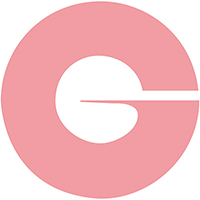Part of the beauty of perfumery is the ability of a specific combination of fragrance notes to transport you to a different place or time, or to elicit a strong emotional response.
But, in the same way that one person might feel elated by the combination of notes in a sonata that draws tears from someone else, individuals’ responses to fragrance can be, well… individual, reflecting cultural differences, as well as personal preference.
As Alfonso Álvarez-Prieto, General Manager of Firmenich’s new Scentmate platform, explains, a consumer from the south of Spain would expect a fragrance promising orange blossom to smell like the blooms they are familiar with in their environment, while “if you put an orange concept in certain markets in northern European, for example, and you nail the orange flower [scent], people will not understand it, because they expect an orange [fruit] smell”.
Variations between individuals, plus the sometimes abstract nature of fragrance creation briefs, means that the collaborative relationship between a perfumer and the client, while fruitful, can be drawn-out.
“When entrepreneurs or individual brands want to tackle fragrance, when they go to a classic fragrance house, it’s a very difficult process because they need to voice what they have in their head,” says Álvarez-Prieto. “And they want to experiment. They want to do A/B testing of products, and they want to launch a lot of different products to see which one works. But each brief for each product takes a lot of time to get right, because they need, first of all, to voice something that is very hard to voice.”
“Everything is about communication,” Juliette Karagueuzoglou, a Senior Perfumer based at International Flavors & Fragrances’ (IFF’s) Neuilly Creative Centre, tells Cosmetics Business.
“It’s a long discussion that we have; sometimes development takes more than a year or two. So, the first thing we do when we receive a brief is try to touch them with a creative idea and then we are building the fragrance until the end with them... being in a creative process demands communication.
“It is tough sometimes... you really need to understand and spend time with them [the client]. It’s a learning process, even for us [perfumers]. “Then the consumer might be very different from you too. You have to understand a lot of different people put in front of you.”
Increasingly, the perfumery industry is adopting AI as a tool to help smooth and accelerate the fragrance creation process, ironing out any potential for miscommunication.
“AI is not creative; AI is a tool,” affirms Arnaud Montet, VP of Global Human and Consumer Insights at IFF. “And, as a tool, it is there to support the creative work of the perfumers.
“Their work is not only creation – it’s highly multi-dimensional,” he adds. “You’re in a very complex environment. You have to deal with regulations, you have to deal with multiple cultural needs, you have to deal with a bunch of things that really take a lot of time to be addressed and solved. And this is where AI can become not only an assistant, but a companion, and take care of all that.”
Montet believes there are three stages where AI can play a role in the process of getting a successful fragrance to market. Firstly, there is the exploration and consumer understanding phase; secondly, as mentioned, AI can be an aid during the creation stage; and, finally, it can be helpful for commercialisation and promotion.



